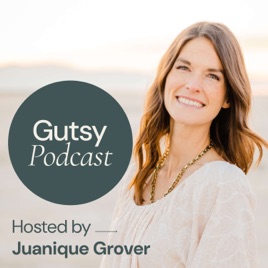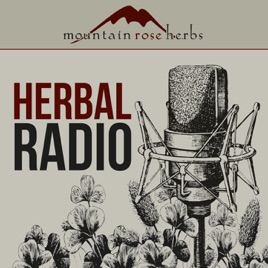
Advertise on podcast: The Holistic Herbalism Podcast
Rating
4.8 from
Country
This podcast has
239 episodes
Language
Publisher
Explicit
No
Date created
2017/11/03
Average duration
52 min.
Release period
18 days
Description
Practical herbalism from practicing herbalists. Conversations, botanical deep-dives, Q&A with clinical herbalists Katja Swift & Ryn Midura of CommonWealth Holistic Herbalism.
Podcast episodes
Check latest episodes from The Holistic Herbalism Podcast podcast
Acknowledging Complexity Is Not Gatekeeping
2024/02/24
When you’re an herbalist, it’s normal to get questions from people about herbs. Usually they’re thinking that it’s a simple question, and expecting a simple response: “What’s good for IBS?” “Chamomile.” But the truth is a lot more complex than that! When you learn about herbalism, you come to understand that there are no herbs “for” any disease state. Instead, there are herbs who can exert influences on the body, and those may match well (or poorly) with the specific state of an individual person. So you become less enthusiastic about simply giving someone the name of an herb when they ask “what’ll work for…?”
This dynamic is even more pronounced on social media. Whether in an herbalism discussion group or in direct messages from your followers, an herbalist on social media will see lots of these types of questions – and lots of those one-word responses, too! But people don’t take the names of herbs – they take herbs! Which means they prepare tea (using this much plant matter for that much water), or they take tincture (made at this or that herb:menstruum ratio), or they get a supplement (made by this or that brand)… And so even if you give someone the name of a plant, have you really helped them figure out how to take it? How much to take? How often, for how long? All those details can make or break the success of an intervention.
When you get that kind of question, you want to give a helpful answer – and that can mean an answer that’s quite different from what the asker expects. Instead of simply listing names of herbs, try giving an insight into your own herbal thought process! For example, if they’re asking about “herbs for headaches”, you can briefly describe various patterns that can cause headache – heat, dryness, tension, stagnation, etc – and help them identify what kind of headache they have.
From there, you can suggest herbs to experiment with – and that’s an important phrase, “to experiment with”! Helping people understand that working with herbs involves multiple rounds of self-experimentation is a great service you can provide.
It takes a little more time to construct a response like this, but it’s significantly more helpful to the asker. They might expect you to simply know the right herb for them, and if you just say “it depends and it’s complicated”, that can feel like you’re gatekeeping. But if you share your own decision-making process, you both teach them how to think like an herbalist (even just a little bit), and you help them understand you’re not holding out on them!
Looking to improve your skills as an herbalist and clinician? Our Clinical Skills for Herbalists course has practical guidance for setting you up from scratch, or building on your existing foundation.
If you enjoyed the episode, it helps us a lot if you subscribe, rate, & review our podcast wherever you listen. This helps others find us more easily. Thank you!
Our theme music is “Wings” by Nicolai Heidlas.
Support the showYou can find all of our online herbalism courses at online.commonwealthherbs.com!
more
Starting An Herb Shop
2024/02/19
We continue this week with Katja’s series: Starting Your Herbal Business! Today the focus is on an herb shop or herbal apothecary, with or without a tea bar for tastings and treats.
Running an herb shop involves a fair amount of administrative work: ordering, stocking, inventory, payment processing, taxes, etc. Sharpen up your spreadsheets, folks! That’s not all there is to it, of course – there’s a huge aspect of community-building involved. Talking to people, planning events, and serving as a hub for your herbal community are also part of the gig.
In fact, if we can give only one piece of advice, it’s this: think of your herb shop as a community center, first and foremost. The stronger you can make that community connection, the stronger your business will be. Listen to the episode for more insights and tips as you build your business!
Would you like to know more? We’ve got just the thing! The Herbal Business Program has all the nitty-gritty details about setting up your herbal business – whether that’s products, clinical herbalism, or another variety of herbal pursuit. From GMPs and labeling laws, to marketing, to taxes & insurance, to the technology you’ll need to make it all happen, this course has everything. You can do this!
Like all our offerings, this is a self-paced online video course, which comes with free access to twice-weekly live Q&A sessions, lifetime access to current & future course material, twice-weekly live Q&A sessions with us, open discussion threads integrated in each lesson, an active student community, study guides, quizzes & capstone assignments, and more!
If you enjoyed the episode, it helps us a lot if you subscribe, rate, & review our podcast wherever you listen. This helps others find us more easily. Thank you!
Our theme music is “Wings” by Nicolai Heidlas.
Support the showYou can find all of our online herbalism courses at online.commonwealthherbs.com!
more
Starting An Herbal Products Business
2024/02/08
This week Katja brings you the first in a new series we’ve been wanting to produce for you: Starting Your Herbal Business! Today the focus is on herbal products – tinctures, salves, elixirs, tea blends, all that good stuff!
Listen in for a simple explanation of what you’ll need to know if you want to build an herbal products business of your own. It’s not just about knowing your herbs – although of course that comes first! It’s also about medicine-making at scale, creating effective & regulation-compliant labeling, marketing effectively and sincerely, and finding what makes your remedies uniquely yours. That’s what people want!
Would you like to know more? We’ve got just the thing! The Herbal Business Program has all the nitty-gritty details about setting up your herbal business – whether that’s products, clinical herbalism, or another variety of herbal pursuit. From GMPs and labeling laws, to marketing, to taxes & insurance, to the technology you’ll need to make it all happen, this course has everything. You can do this!
Like all our offerings, this is a self-paced online video course, which comes with free access to twice-weekly live Q&A sessions, lifetime access to current & future course material, twice-weekly live Q&A sessions with us, open discussion threads integrated in each lesson, an active student community, study guides, quizzes & capstone assignments, and more!
If you enjoyed the episode, it helps us a lot if you subscribe, rate, & review our podcast wherever you listen. This helps others find us more easily. Thank you!
Our theme music is “Wings” by Nicolai Heidlas.
Support the showYou can find all of our online herbalism courses at online.commonwealthherbs.com!
more
Herbs A-Z: Zingiber 🫚
2024/02/02
Today we reach the end of our apothecary shelves! This series started way back with episode 170 on Achillea & Acorus, and today in episode 227 we’ve finally come to Zingiber.
Today’s entire episode is all about ginger. (Yes, it deserves its own entire episode. If you don’t already believe it, we will convince you!)
We discuss Katja’s evolving preference for fresh vs dried ginger in our tea blends at home, and some of the variations in activity between fresh vs dried ginger. We talk about quick topical applications of this wildly accessible herb, to relieve muscle aches, joint pains, and other musculoskeletal discomforts. Ryn takes time for an ode to candied ginger – yes, it’s sugar, but there are plenty of reasons why it’s excellent to have! You can easily make your own, too.
Maybe you could put some chopped candied ginger into some ginger-chamomile cookies, eh?
You can even grow your own ginger, if you’re up for it!
Finally, we mention some relatives of ginger, members of the Zingiberaceae: turmeric (Curcuma longa), galangal (Alpinia galanga), cardamom (Elettaria cardamomum), grains of paradise (Aframomum melegueta), korarima (Aframomum corrorima), “shampoo ginger lily / bitter ginger” (Zingiber zerumbet). These are all worth experimenting with and comparing to ginger – they have a lot in common, with some individual nuances. Watch out for “wild gingers” of the Asarum genus, though – those have risks of liver toxicity.
Ginger’s an herb we love so much, we probably mention it in every course we teach… but especially in the Digestive Health course! Learning to care for digestion is a critical skill for herbalists, and a place herbs can do so much good.
Like all our offerings, this is a self-paced online video course, which comes with free access to twice-weekly live Q&A sessions, lifetime access to current & future course material, twice-weekly live Q&A sessions with us, open discussion threads integrated in each lesson, an active student community, study guides, quizzes & capstone assignments, and more!
If you enjoyed the episode, it helps us a lot if you subscribe, rate, & review our podcast wherever you listen. This helps others find us more easily. Thank you!
Our theme music is “Wings” by Nicolai Heidlas.
Support the showYou can find all of our online herbalism courses at online.commonwealthherbs.com!
more
Herbs A-Z: Withania & Zanthoxylum
2024/01/27
We’ve reached our penultimate Herbs A-Z episode this week, and we’re highlighting ashwagandha & prickly ash – it’s prickly ashwagandha!
Withania somnifera, ashwagandha, is an herb Katja takes every single day. Usually, she gets it in the form of “notCoffee”, a formula of various roots and herbs blended to offer sustained energy and endocrine suppport. Ashwagandha is popular as an adaptogen or a “stress herb”, but its real power is in helping entrain healty cycles of activity and rest. Balance is not about stillness, but dynamic equilibrium, and ashwagandha’s one of our favorites to build that capacity.
Zanthoxylum americanum, prickly ash, tells you all about its diffusive activity with the message of its tingly taste. This makes it not only an excellent herb for toothache relief, but also a truly fantastic circulatory stimulant. Stagnant blood and lymph are dispersed, and healing can proceed effectively, when we recruit prickly ash for this purpose.
These two herbs make recurrent apperances in both our Neurological & Emotional Health course and our Immune Health course. Improving innner communications, establishing consistent cycles, and enhancing fluid movement are just a few of the actions herbs can bring to these critical systems to support their work.
Like all our offerings, these are self-paced online video courses, which come with free access to twice-weekly live Q&A sessions, lifetime access to current & future course material, twice-weekly live Q&A sessions with us, open discussion threads integrated in each lesson, an active student community, study guides, quizzes & capstone assignments, and more!
If you enjoyed the episode, it helps us a lot if you subscribe, rate, & review our podcast wherever you listen. This helps others find us more easily. Thank you!
Our theme music is “Wings” by Nicolai Heidlas.
Support the showYou can find all of our online herbalism courses at online.commonwealthherbs.com!
more
Herbs A-Z: Verbascum & Verbena
2024/01/08
We have just three episodes remaining in our Herbs A-Z series! Today’s show features mullein and blue vervain.
Verbascum thapsus, mullein, deserves its reputation as an effective remedy for dry respiratory conditions. Its leaf is a great ally when your home heating system dries out the air inside, or when your area is hit by wildfire smoke. But mullein leaf isn’t a systemically moistening herb – its effects outside the respiratory system are drying, through better distribution of fluids. Also, mullein root and flower are each different from the leaf – root is even more astringent & tonifying, while the leaf is a more mucilaginous demulcent. Categories like “moistening” and “drying” bear close investigation and nuanced exploration – mullein teaches us this lesson.
Verbena hastata, blue vervain, is an excellent nervine when you want to release tension without losing all structure. It helps us to receive & transform, whether that’s food or information or experiences. As one of our bitter nervines – a very important affinity group of medicinal plants – vervain is an excellent companion to motherwort, mugwort, st john’s wort, yarrow, angelica, feverfew, betony, skullcap, and the like. These herbs call forward the strong interconnection of our digestive & nervous systems, and remind us that mental discomforts are as much in need of relief as physical ones. That includes during acute illness, and that’s why vervain always gets included in our homemade Winter Elixir. Try it in yours this year!
If you live in the northern hemisphere, cold & flu season is in full swing! And no matter where you live, it’s good to have the knowledge and skills you need to take care of these common problems at home. Herbal Remedies for Cold & Flu teaches you everything you need to know to conquer a cold or fight off the flu. We teach you how to work with herbs that are safe and effective for all aspects of the illness. These strategies can also be very effective when coping with COVID, RSV, and other respiratory infections, too! Our focus is on finding ways to support what your body is already trying to do as it works to restore balance.
Like all our offerings, these are self-paced online video courses, which come with lifetime access to current & future course material, twice-weekly live Q&A sessions with us, open discussion threads integrated in each lesson, an active student community, study guides, quizzes & capstone assignments, and more!
If you enjoyed the episode, it helps us a lot if you subscribe, rate, & review our podcast wherever you listen. This helps others find us more easily. Thank you!
Our theme music is “Wings” by Nicolai Heidlas.
Support the showYou can find all of our online herbalism courses at online.commonwealthherbs.com!
more
Herbs A-Z: Urtica & Vaccinium
2023/12/26
DECEMBER SALE: 20% off every course & program we offer, all month long! Use code KINDNESS at checkout!
As we draw near the end of our tour of the home apothecary herbs, today we come to nettle and bilberry.
Urtica dioica, nettle, is an herb who can help with a really vast array of health issues. Sometimes we half-jokingly refer to “nettle deficiency syndrome”: a constellation of imbalances due to poor mineral nutrition, fluid stagnation, systemic inflammation, and associated symptoms. In truth, many green nutritive herbs and food plants help resolve this – but nettle is a particular standout, and is often a great choice for a month or two of work to establish a new baseline. Do compensate for its drying qualities in people of dry constitution, though! This can be done by formulating with marshmallow or other demulcent herbs, or by cooking the nettle into a soup or other food.
Vaccinium myrtillus, bilberry – also known as European blueberry, whortleberry, huckleberry, and a variety of other common names – is indeed closely related to blueberry and also cranberry. All these edible berries – and others besides – share a lot of attributes as remedies. Their sour flavor and blue-purple-red colorations indicate capacity to drain excess fluid, protect blood vessels, and improve blood sugar regulation. The leaves of these plants exert these actions, too! So whichever edible berries grow where you live, making them a part of your life as much as you can is a pleasant way to protect yourself.
Everything’s on sale in December!
All our offerings, are self-paced online video courses. They all come with free twice-weekly live Q&A sessions, lifetime access to current & future course material, open discussion threads integrated in each lesson, an active student community, study guides, quizzes & capstone assignments, and more!
Use code KINDNESS at checkout to get 20% off!
If you enjoyed the episode, it helps us a lot if you subscribe, rate, & review our podcast wherever you listen. This helps others find us more easily. Thank you!
Our theme music is “Wings” by Nicolai Heidlas.
Support the showYou can find all of our online herbalism courses at online.commonwealthherbs.com!
more
Herbs A-Z: Ulmus & Uncaria
2023/12/18
DECEMBER SALE: 20% off every course & program we offer, all month long! Use code KINDNESS at checkout!
This week we return to our home herbal apothecary shelves and discuss two medicinal barks: slippery elm and cat’s claw.
Ulmus rubra, slippery elm, is an at-risk plant. We don’t work with it frequently, for this reason – other demulcents will usually do the job, just fine. It is a standout mucilaginous plant, though, that’s for sure! It can be difficult to strain cut & sifted herb for tea, in fact, because of the thickness of mucilage creates when infused in water. For this reason it’s often easier to work with it as a powder. Never forget that other elms – especially the abundant / “invasive” species Ulmus pumila, the Siberian elm – can do all the same work as slippery elm!
Uncaria tomentosa, cat’s claw, is an herb with a lot of reputations. It’s reputed as an “anti-cancer” herb, as an “immune stimulant”, as an “herb for joint pain”… It’s easy to put herbs into conceptual boxes when we talk about them this way. To break out of those boxes, try two paths. One is a return to fundamentals: here is a cooling, drying, tonifying herb, which acts correctively on hot/damp/lax areas in the body. Another is a dive into research: here’s an herb with extensive research demonstrating its activity on chemical messengers of the immune system involved in the regulation of inflammation. Weaving these threads together is a good way to broaden your application of this plant and evade the trap of selecting herbs “for” diagnoses.
Everything’s on sale in December!
All our offerings, are self-paced online video courses. They all come with free twice-weekly live Q&A sessions, lifetime access to current & future course material, open discussion threads integrated in each lesson, an active student community, study guides, quizzes & capstone assignments, and more!
Use code KINDNESS at checkout to get 20% off!
If you enjoyed the episode, it helps us a lot if you subscribe, rate, & review our podcast wherever you listen. This helps others find us more easily. Thank you!
Our theme music is “Wings” by Nicolai Heidlas.
Support the showYou can find all of our online herbalism courses at online.commonwealthherbs.com!
more
Herbs A-Z: Trifolium & Turnera
2023/10/28
Today our featured herbs are red clover & damiana – two complementary fluid-moving remedies.
Red clover (Trifolium pratense) has a reputation as an herb that “cures breast cancer”. That’s not the way we talk or think about it, but it’s worth digging in to why people say that! What underlies the claim is an observable effect: the plant can diminish or reduce swellings (and not only in breast tissue). This is due to its capacity to improve the circulation of lymphatic fluid, and that’s a good thing – helpful for stagnation patterns and for immune efficiency. But it’s still not a “cure”, and it’s important for herbalists to be clear about that difference.
Damiana (Turnera diffusa) is more of a blood-moving than lymph-moving herb. It’s one of our favorite dispersive remedies, for increasing blood flow to the periphery and to the skin. Its affinity for the pelvis and it’s capacity to restore or enhance sensitivity in nerve endings contribute to its reputation as an aphrodisiac. It’s not about raging lust – it’s about relaxation, sensation, and communication!
Red clover and damiana both make an appearance in our Integumentary Health course, along with an array of other herbs who help the skin. Whatever the problem is – whether we call it eczema, psoriasis, or just “that troublesome patch of skin”, herbs can help! Topical applications for common herbs play a big role in this work, and we also dig into the effective herbs – like these two – which you can take orally to get results on the skin.
Like all our offerings, this self-paced online video course comes with free access to twice-weekly live Q&A sessions, lifetime access to current & future course material, open discussion threads integrated in each lesson, an active student community, study guides, quizzes & capstone assignments, and more!
If you enjoyed the episode, it helps us a lot if you subscribe, rate, & review our podcast wherever you listen. This helps others find us more easily. Thank you!
Our theme music is “Wings” by Nicolai Heidlas.
Support the showYou can find all of our online herbalism courses at online.commonwealthherbs.com!
more
Herbs A-Z: Thymus & Tilia
2023/09/09
We’re on the final shelf of our home apothecary, and today we’re talking about thyme & linden!
Thyme (Thymus vulgaris) is our absolute favorite herb for a steam. Herbal steams are an amazing way to bring the plant’s medicinal actions into the lungs and sinuses – and the ear canal and eyes, too! Thyme’s a great steam herb because it’s so rich in volatile, aromatic chemistry. This also means it’s easy to prepare as a tea, tincture, infused vinegar, infused oil, or salve – it’s a very flexible herb.
Ryn’s favorite formula recently has been “Sweet Heat” – a combination of hot aromatic mints (thyme, oregano, sage, rosemary, monarda) with sweet demulcents (licorice, fennel, fenugreek, goji berry). Make it strong and drink it hot, and you’ll feel the diaphoretic movement of heat upwards & outwards in your body!
Linden (Tilia spp.) is a very friendly demulcent herb. Infusing it in water makes the liquid silkily viscous, but not slimy or snotty. This makes it a good choice for folks with dry constitutions who have a taste/texture aversion to the mucilage of a marshmallow or elm infusion. Linden’s a common street tree in cities, so you might have some growing near you! (If you’re in Boston, check out this Public Street Tree Map and you can identify every tree on your block!)
Katja’s excited to share some new information about linden today – it has activity as a quorum sensing inhibitor! That means it can break up a biofilm, which is a collaboration of microbes that resists the attack of your immune system. More and more herbs are being identified as having such activity. Although linden isn’t generally considered a first choice herb for wound care, this kind of info tells us it can indeed be of help in that situation.
Whether you’re a brand-new beginner or an herbalist with experience, it’s always helpful to study the herbs in depth! Our comprehensive presentation of herbal allies is in our Holistic Herbalism Materia Medica course. It includes detailed profiles of 100 medicinal herbs!
Like all our offerings, this self-paced online video course comes with free access to twice-weekly live Q&A sessions, lifetime access to current & future course material, open discussion threads integrated in each lesson, an active student community, study guides, quizzes & capstone assignments, and more!
If you enjoyed the episode, it helps us a lot if you subscribe, rate, & review our podcast wherever you listen. This helps others find us more easily. Thank you!
Our theme music is “Wings” by Nicolai Heidlas.
Support the showYou can find all of our online herbalism courses at online.commonwealthherbs.com!
more
Herbs A-Z: Taraxacum & Thuja
2023/08/21
Our herbs for this week are dandelion & cedar! Both are diuretic, but their similarities pretty much end there.
We are big fans of gardening your weeds, and we took another opportunity here to advocate for it. It’s easy to do, and you don’t have to stress about upkeep. Plus, you get nutritious or medicinal plants ready to hand! Dandelion is a great one for this, and the leaf makes an excellent base for a Salad of Health (listen in for an example recipe). Whether you grow it or not, it’s easy to find growing wild – but don’t be fooled by any of the many not-a-dandelions out there in the field!
The cedar we’re talking about today is “western redcedar” or arborvitae, Thuja plicata. (Other plants called ‘cedar’ include “true cedar” Cedrus species, as well as some species of Juniperus.) Katja has an argument to make that this cedar should be counted as a nervine – but it’s not a sedative one; rather the opposite. We also talk quite a bit about its particular aromatic profile, and how perhaps cedar is to tulsi as pine is to rosemary…
You can learn herbalism online – with us!
All our offerings are self-paced online video courses which come with free access to twice-weekly live Q&A sessions, lifetime access to current & future course material, open discussion threads integrated in each lesson, an active student community, study guides, quizzes & capstone assignments, and more!
If you enjoyed the episode, it helps us a lot if you subscribe, rate, & review our podcast wherever you listen. This helps others find us more easily. Thank you!
Our theme music is “Wings” by Nicolai Heidlas.
Support the showYou can find all of our online herbalism courses at online.commonwealthherbs.com!
more
Herbs A-Z: Solidago & Stachys
2023/08/13
Today we proceed futher along our shelves, looking at the herbs we keep in our home apothecary. In this episode we discuss goldenrod and wood betony.
When using the botanical Latin name for goldenrod, we write Solidago spp. – that “spp.” means “species plural”; there are many varieties in the genus. It can hard to tell them apart! Fortunately, your senses can tell you about the particular actions of your particular goldenrod. Is it more bitter? That’ll have more digestive action. Is it more aromatic? That’ll really get you kidneys moving. It’s also worth trying goldenrod leaf-only vs flower-only tea or tincture.
Betony, also called wood betony, is Stachys officinalis. It’s related to lamb’s ears (Stachys byzantina), but nowhere near as fuzzy, and with smaller, scallop-edged leaves. An herb with a panoply of benefits, in modern people we find its most important attributes are its grounding and centering effects. These can help us oppose the habits of multitasking and dissociation from the body which are so prevalent today. It’s also a very easy herb to grow in a pot on your portch!
Mentioned in this episode:
episode 077: Urban Wildcrafting Ethics & Guidelinesepisode 195: How To See Stress In Wild Plantsepisode 113: Grow Your Own Herbs
Taking a fallow period to focus on the hands-on aspects of herbalism is one of our favorite tips for people who are learning. There are lots of ways to study, and lots of ways to enhance your learning. We’ve collected our best suggestions into a FREE COURSE for you: Herbal Study Tips! This fun course is designed to make all your learning – whether that’s with us, from other teachers, from books, or from the plants themselves – more exciting and effective.
Like all our offerings, these are self-paced online video courses, which come with free access to twice-weekly live Q&A sessions, lifetime access to current & future course material, twice-weekly live Q&A sessions with us, open discussion threads integrated in each lesson, an active student community, study guides, quizzes & capstone assignments, and more!
If you enjoyed the episode, it helps us a lot if you subscribe, rate, & review our podcast wherever you listen. This helps others find us more easily. Thank you!
Our theme music is “Wings” by Nicolai Heidlas.
Support the showYou can find all of our online herbalism courses at online.commonwealthherbs.com!
more
Podcast reviews
Read The Holistic Herbalism Podcast podcast reviews
Super mom 74
2024/02/21
Totally Awesome! Wealth of Knowledge
I recently came across this podcast as an aspiring beginner herbalist and I absolutely fell in love! I have gone back and started listening to every e...
more
Kleigh523
2024/02/18
Love this podcast!
I have listened to quite a few different herbal podcasts, wanting to expand my knowledge on herbs. And I am SO happy that I came across this podcast. ...
more
Maureenveterinarian
2023/10/08
Love this podcast!
I love the energy and clarity of the hosts. This gives a fantastic overview of herbs in a digestible format. Thank you!!
Madra Kat
2023/09/30
Thank you
You podcast is awesome!! Thank you for sharing this message with the community.
I enjoy learning about herbs .
Mamakay66
2023/08/13
Knowledge
I just want to thank Katja & Ryn. You both are awesome. I started taking your course beginning of the year. A little nervous. But after I start studyi...
more
Aʏʟᴏʀ
2023/08/11
Self-heal
I would love to hear what you guys say about self heal. I love listening to you guys.
BTL444
2023/08/04
Love it!
Thanks guys for sharing your knowledge and wisdom on these herbs and plants! So helpful!
TvFan01
2023/06/29
So wonderful- Highly recommend !
I’m new to the show but these folks are very knowledgeable, grounded, practical and share the how and why. Just love them!
snakes forever
2023/05/12
💚Beginner friendly🌱🌿🌺
This is the best podcast I’ve found for herbalists especially beginners. This podcast is what keeps me going on my herbalism path even when negative t...
more
Roxanne-O
2023/04/05
Great pod! Informative.
Don’t know how I missed this podcast or you guys in general, but I just found the podcast last week and I love it! One of my favorites so far. So info...
more
Podcast sponsorship advertising
Start advertising on The Holistic Herbalism Podcast & sponsor relevant audience podcasts
You may also like these alternative health Podcasts

4.8
1715
401
Your Own Magic
Raquelle Mantra

4.8
170
100
Biohacking Superhuman Performance
Nathalie Niddam

4.8
910
603
Energized with Dr. Mariza
Dr. Mariza Snyder

4.8
96
157
The Plant Centered and Thriving Podcast
Ashley Kitchens: Plant-Based Registered Dietitian and Virtual Nutrition Mentor

4.9
666
191
Gutsy Health | Nutrition and Medicine
Juanique Roney & Gina Worful

4.6
647
100
The Energy Blueprint Podcast
Ari Whitten

4.9
341
269
Nutrition with Judy
Judy Cho

4.7
203
190
Herbal Radio
Mountain Rose Herbs

4.9
1863
221
The PCOS Podcast by A Cyster & Her Mister
PCOS Weight Loss

4.8
814
745
The Keto Kamp Podcast With Ben Azadi
Ben Azadi



